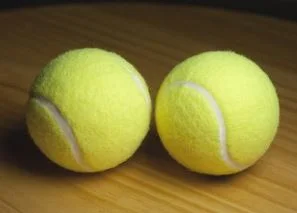GROWTH MINDSETS- LESSON 4-
GROWING MY MIND
PART 1- 5 MINUTES
Rationale
- Teaching students a growth mindset can help increase their motivation to learn, as well as lead to higher engagement and performance (Good, Aronson, & Inzlicht, 2003; Blackwell, Trzesniewski & Dweck, 2007; Aronson, Fried & Good, 2002).
Learning objectives
By the end of this lesson, learners should:
- identify and understand two ways of thinking about intelligence
- commit to an activity that will grow their neurons
- explain how they can get their brain to develop
PART 2- discussion of homework- 5 minutes
Discuss the responses to the homework task based on the article, "Fixed mindset vs growth mindset".
PART 3- TENNIS BALL TOSS ACTIVITY- 20 MINUTES- tennis balls required
Suggestion is to book a small space on the oval or in the sports hall and arrange for suitable throwing objects to be used. (If this is not possible, students could find suitable objects that are readily available in the classroom or use recycled paper and scrunch it up tightly into a ball to do the activity.)
Students are to form pairs (ideally) or groups of three. Students stand one metre from their partner and practice throwing and catching with their least preferred hand (eg if they are naturally right handed, they use their left hand only, and vice versa). As students get the hang of the activity, they should gradually increase the distance between themselves and their partner. Allow 10 minutes for students to notice a small improvement, with the option of changing partners during the activity.
DEBRIEF DISCUSSION
At the end of the activity, teacher leads a debrief using these questions:
- What did people tell themselves at the start of this activity? (eg. I'm hopeless at hand-eye coordination, I'm good at catching). We should notice our self-talk more often and "catch" our fixed mindsets, as per lesson 3- "Gotcha" activity.
- Was there any improvement noted during the 10 minute period?
- If there was an improvement, how could this be explained? What happened in our brain?
A NOTE FOR TEACHERS- Sometimes things don't go to plan...and often we can learn from it. You may notice that some students change the rules of this activity. Sometimes, "sporty" kids might take it upon themselves to do it with their preferred hand- essentially giving up on the task. Is this a fixed mindset? Are they frustrated that they have to do it with the opposite hand, when they know they could be one of the best in the class with their preferred hand? What can we all learn from these responses? Pose questions such as the ones above at the end of the activity in order to try to expose some of the thinking (the mindsets) that led to the behaviour.
PART 4- WATCH, REFLECT, DISCUSS- 10-15 MINS
As students watch, they should record in their workbook, AT LEAST:
- 1 new learning
- 1 learning that has been reinforced
- 1 question / challenge / argument you might hav.
Then teachers are to facilitate a class discussion about what has been recorded.
PART 5- HOMEWORK ACTIVITY
Should you wish to accept this mission, your homework is to commit to doing one of the homework tasks below over the next week (or fortnight- depending on when your next lesson is for this subject). By doing this, we are encouraging our brain cells [neurons] to grow in new and different ways. Notice any improvement that you experience in the skill you choose to practice and share your journey with your class
- Begin to learn how to juggle with 3 balls.
- Every time you write your name during the next week, do it with your non-writing hand.
- Skipping with a rope (for more challenge, progress to pepper or double-unders)
- Tongue twisters
- Brush your teeth with the opposite hand every night.
- Juggling with a soccer ball
- Learning a song on guitar
- Knitting / textiles / sewing


